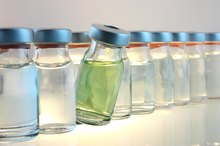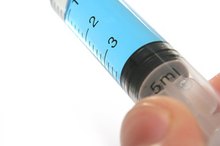Athletes: How to Measure Rates of Cellular Respiration
Cellular respiration is a metabolic process that allows organisms to utilize energy stored in the chemical bonds of glucose, or sugar. This process involves the consumption of glucose and oxygen, as well as the production of carbon dioxide and water. As an athlete, when you exercise, your rate of cellular respiration increases in order to meet the increased energy demands of your muscles.
Oxygen Consumption
Cellular respiration is usually an aerobic process, which means that oxygen is required to generate energy from biochemical bonds in glucose. Therefore, you can determine your rate of cellular respiration by measuring the rate at which you consume oxygen. The more oxygen you are consuming when you exercise, the higher your rate of cellular respiration.
Measuring Oxygen Consumption
How to Calculate VO2 Reserve
Learn More
The most-commonly used field test to measure oxygen consumption is the 1.5-mile running test, according to Matt Brzycki from Princeton University 2. To complete the test, simply time yourself as you run 1.5 miles on a level indoor or outdoor track as fast as you can. Then refer to Table 1 in the Princeton Oxygen Consumption Chart, which will tell you what your predicted oxygen consumption is 2. Divide your weight in lbs. by 2.2 to determine your weight in kg. Multiply your value in Table 1 by your weight in kg to determine your oxygen-consumption rate in ml of oxygen per minute. Finally, divide this value by 1,000 to determine your oxygen consumption in liters per minute. This is your rate of oxygen consumption, and is a measure of your rate of cellular respiration.
- The most-commonly used field test to measure oxygen consumption is the 1.5-mile running test, according to Matt Brzycki from Princeton University 2.
- Multiply your value in Table 1 by your weight in kg to determine your oxygen-consumption rate in ml of oxygen per minute.
Carbon Dioxide Production
A less-common method of measuring your rate of cellular respiration is to measure your rate of carbon-dioxide production 1. When carbon dioxide is added to water, it is spontaneously converted to carbonic acid. The more acidic a solution is, the lower its pH. For this reason, you can measure your carbon-dioxide production after exercise by breathing into a solution, and then using a pH indicator to determine how acidic the solution is.
- A less-common method of measuring your rate of cellular respiration is to measure your rate of carbon-dioxide production 1.
- The more acidic a solution is, the lower its pH.
- For this reason, you can measure your carbon-dioxide production after exercise by breathing into a solution, and then using a pH indicator to determine how acidic the solution is.
Measuring Carbon Dioxide Production
How to Test Body pH Levels
Learn More
In order to measure carbon-dioxide production, you will need some laboratory supplies that can be found in most high-school science kits -- a flask, bromthymol blue and sodium hydroxide. Fill the flask with a solution of bromthymol blue dissolved in water. Bromthymol blue is a pH indicator that is blue in basic solution, green in neutral solution and yellow in acidic solution. Your solution of bromthymol blue in water is green, because water has a neutral pH of about 7. Use a straw to breathe into the flask after exercising for a set period of time. As the carbon dioxide in your breath is converted to carbonic acid, your solution becomes acidic and will change color from green to yellow. Once you have exhaled into the flask, add sodium hydroxide, which is a base, drop by drop until the solution changes color back from yellow to green. The more drops of sodium hydroxide you need to add, the more carbon dioxide you are producing after exercising over a set period of time and the higher your rate of cellular respiration.
- In order to measure carbon-dioxide production, you will need some laboratory supplies that can be found in most high-school science kits -- a flask, bromthymol blue and sodium hydroxide.
- Once you have exhaled into the flask, add sodium hydroxide, which is a base, drop by drop until the solution changes color back from yellow to green.
Related Articles
References
Writer Bio
Adrian Budhram is a graduate of McMaster University, where he earned a bachelor's degree in health sciences and is now pursuing an M.D. Budhram also served as a news reporter for the "McMaster Silhouette." He started writing professionally in 2011.









